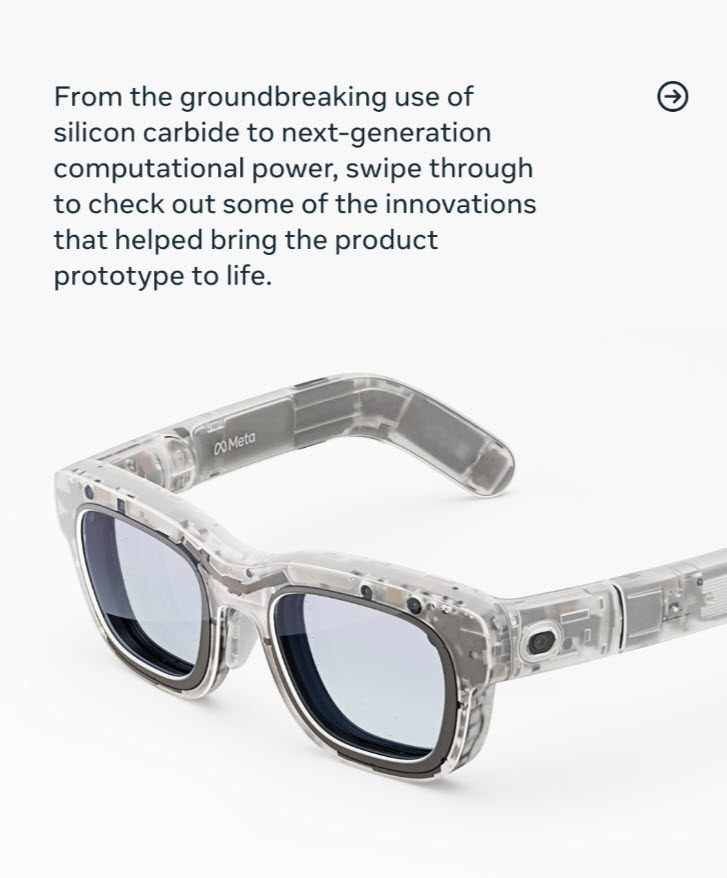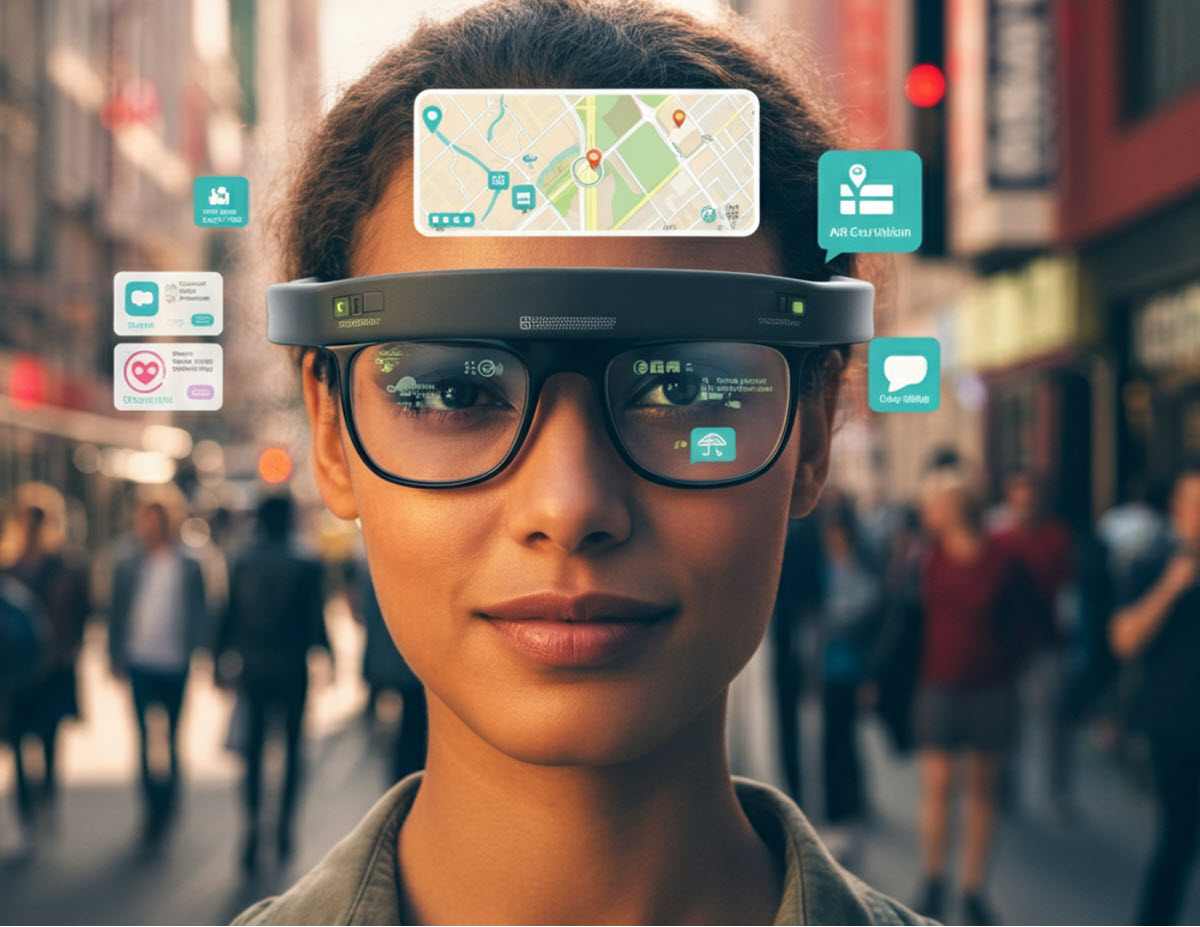The Road to 2027: Meta’s Vision for AR Glasses and the Future of Technology
Augmented reality (AR) has evolved from a futuristic concept into a fast-developing technology with the potential to reshape how we interact with the world. Tech giant Meta is pushing the boundaries of this space with its AR glasses, expected to launch in 2027. But what makes these glasses so significant, and what challenges does Meta face on its path toward revolutionizing AR?
The Future of Augmented Reality: What Meta’s 2027 Glasses Mean for Us
Meta’s upcoming AR project, known internally as “Orion,” showcases the company’s bold vision for the next step in human-computer interaction. These AR glasses aim to create a seamless blend between our physical and digital worlds, bringing data and content right into the wearer’s field of view. Meta envisions these glasses eventually succeeding smartphones as the primary interface for digital communication and everyday tasks.

Current prototypes of Meta’s AR glasses contain several advanced features under development. For instance, they are designed to work with a small external device, nicknamed “the puck,” which provides extra processing power and battery life. This approach is intended to keep the glasses lightweight and comfortable for daily use, a critical factor in achieving mass-market appeal.
Meta’s technology integrates artificial intelligence (AI) into the AR experience, making the glasses not only tools for visualizing data but also smart assistants capable of real-time contextual support. Whether helping users find directions, shop for products, or participate in remote meetings, the glasses could redefine how people engage with technology.
However, Meta faces stiff competition. Apple’s Vision Pro, although more VR than AR-focused, has set expectations for wearable technology with its $3,499 price tag and functionality. Meta CEO Mark Zuckerberg has openly criticized the high cost, arguing that to go mainstream, AR glasses should be priced closer to smartphones.
Challenges on the Horizon
Meta’s ambitious timeline and aspirations come with significant hurdles. One major challenge is the price point. By 2027, Meta aims to bring down manufacturing costs and retail prices to align with consumer budgets, a difficult task given the complexity of AR hardware.
Size and aesthetics are additional concerns. Early iterations of AR products have faced criticism for being bulky and unwieldy. Meta hopes to improve the glasses’ design, drawing inspiration from its Ray-Ban collaboration, which has been well-received for its stylish yet functional approach.
Production challenges are further compounded by global factors, including trade wars and supply chain constraints, particularly given the reliance on overseas components for AR device production. Meta must strike a balance between affordability and functionality to ensure the technology achieves widespread adoption.
How Brands Can Ride the Wave of Interactive Tech in Mobile Marketing
The broader implications of Meta’s AR glasses extend beyond individual consumers to industries like marketing, retail, education, and healthcare. For marketers, in particular, AR glasses could become game-changers. Imagine consumers being able to view personalized, interactive advertisements in real-time as they walk past a store, or use AR to virtually try on products at home via their glasses.
Retailers may also leverage AR glasses to create engaging in-store experiences, such as virtual assistants guiding customers through the aisles or interactive product information displayed directly next to items. For brands, the key lies in developing AR-compatible experiences that simplify consumer decision-making while enhancing engagement.
For medical professionals and educators, AR glasses could streamline workflows and create immersive learning experiences. For instance, medical students could practice procedures in a simulated but hyper-realistic environment, while educators could overlay interactive content in physical classrooms. The practical applications for industries are broad, and the potential benefits significant.
Diverse Perspectives on AR Technology
The development of AR glasses is not without controversy. Privacy advocates have raised concerns about data collection and surveillance. Equipping glasses with advanced sensors and AI opens the door to potential misuse, such as unapproved facial recognition or intrusions into private spaces.
From a societal standpoint, there is also anxiety around how AR might blur the line between reality and technology. Could constant data overlays create a world where people are perpetually distracted from their immediate surroundings? Striking the right balance between utility and ethics will require a collaborative effort from tech companies, regulators, and society.
Despite these concerns, proponents of AR—including industry experts and analysts—view the technology as a burgeoning frontier for innovation. According to projections from Telefónica, extended reality, including AR and virtual reality (VR), will approach a turning point by 2025 as hardware integrates more sophisticated AI capabilities. This trend sets the stage for widespread adoption of devices like Meta’s AR glasses.
Practical Insights for the Present and Future
Although 2027 may seem far off, AR’s influence is already evident today. Industries worldwide are experimenting with early AR implementations, from Snapchat’s AR lenses to furniture retailers enabling customers to “place” virtual items in their homes before purchase. For businesses and individuals alike, understanding how to incorporate AR into current workflows provides a competitive edge in a technology-driven future.
Looking ahead, Meta’s AR glasses represent the possibility of a future where technology feels more human-centered. The idea of wearing a lightweight, smartphone-like device that connects you effortlessly to digital services is compelling. However, for this vision to succeed, companies like Meta must remain focused on developing ethical, accessible, and highly functional products.
Whether AR glasses become the new norm or remain niche will depend on how well these challenges are addressed. For now, the road to 2027 offers a front-row seat to one of the most exciting developments in modern technology.

